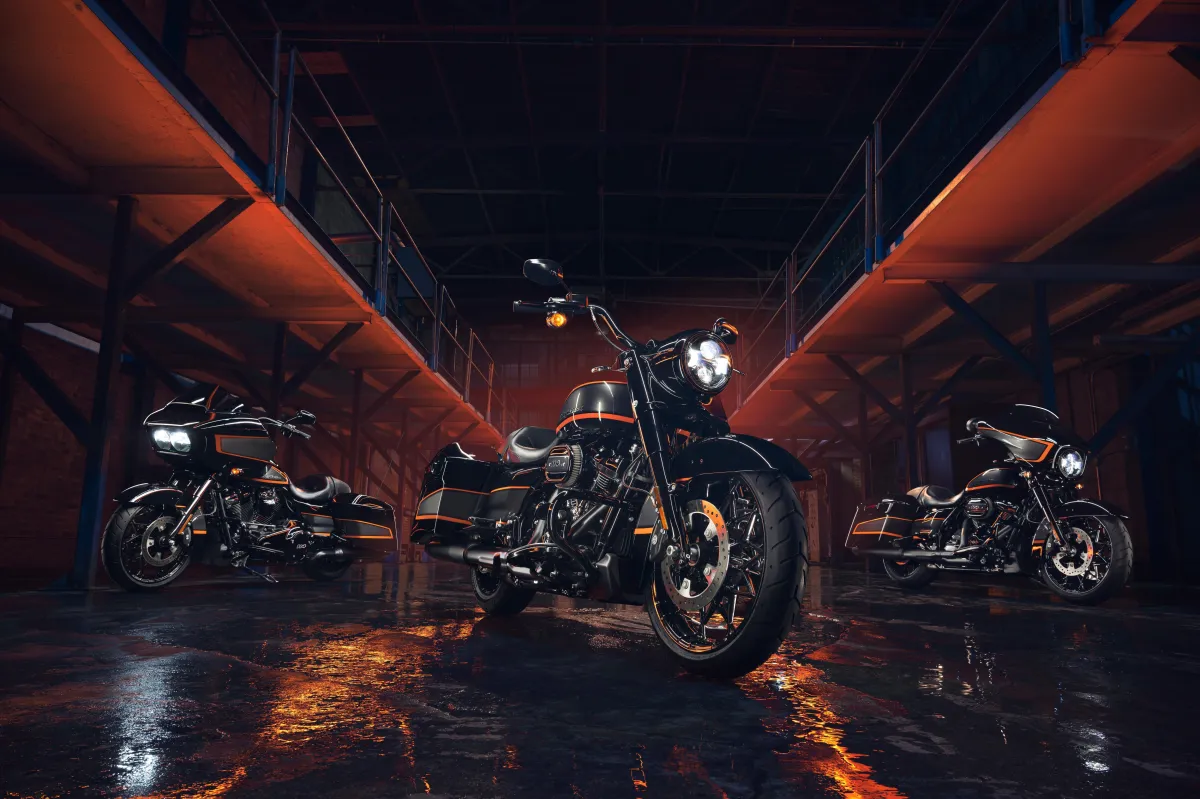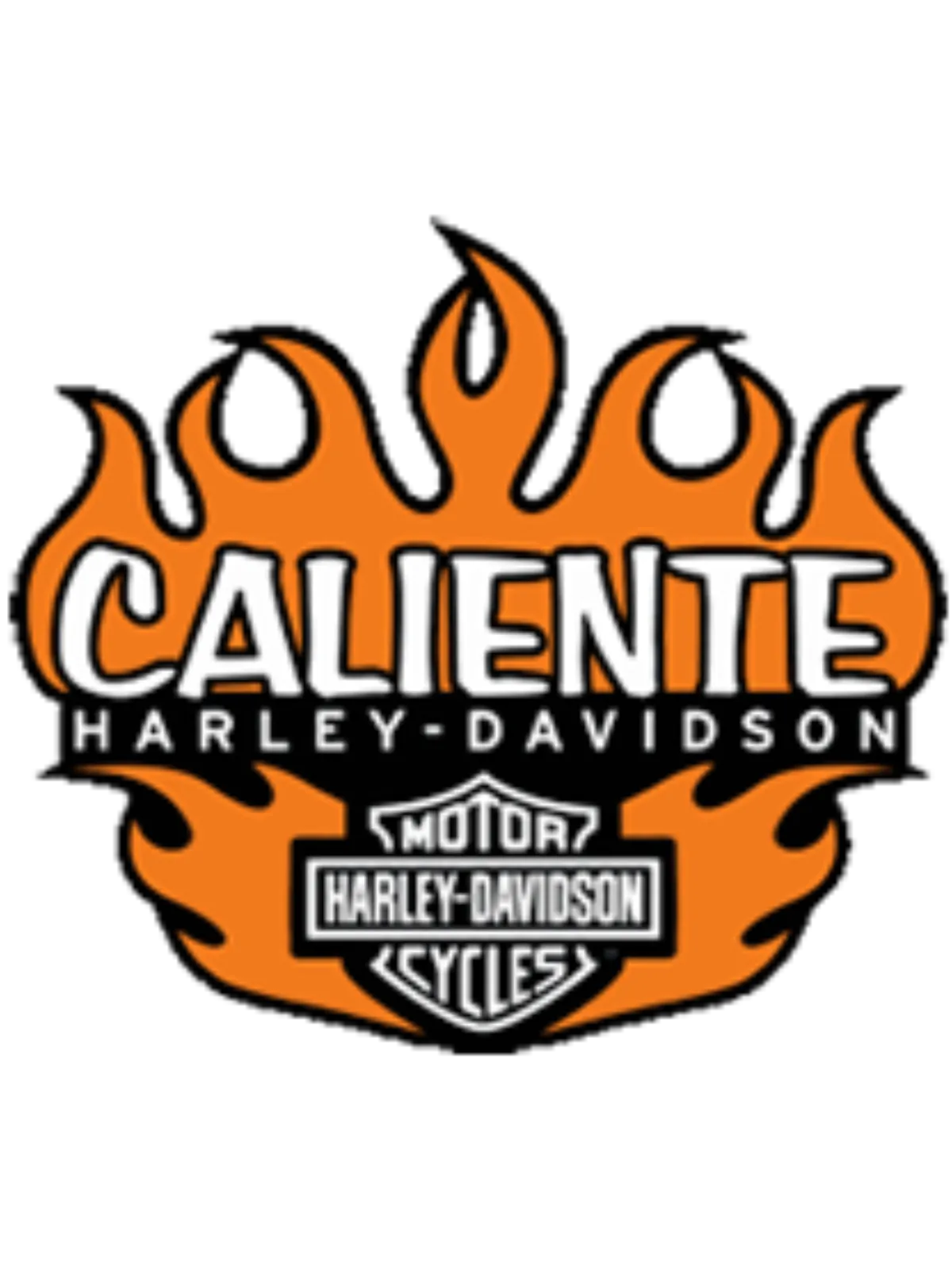Caliente Harley-Davidson Blog

Harley-Davidson’s V-Twin Engines Explained
Harley-Davidson’s V-Twin Engines Explained
Harley-Davidson’s V-Twin engines are more than just mechanical components; they are the beating heart of the brand, defining its sound, performance, and distinctive character. For over a century, Harley-Davidson has evolved its V-Twin engines, each iteration reflecting a blend of heritage, innovation, and a commitment to delivering an unparalleled riding experience. Here’s an in-depth look at Harley-Davidson’s legendary V-Twin engines, their unique characteristics, and how they’ve shaped the brand’s identity.
1. F-Head V-Twin (1914-1929)
The F-Head V-Twin was Harley-Davidson’s first V-Twin engine and laid the foundation for all future designs. This engine featured a unique setup with an overhead intake valve and a side exhaust valve, hence the name "F-Head." With its improved power compared to single-cylinder engines, the F-Head helped Harley-Davidson motorcycles gain popularity and reliability during the early 20th century. Its rugged design made it a favorite among police, military, and long-distance riders.
Key Features:
Overhead intake and side exhaust valves.
Available in 61 cubic inches (1000cc).
Known for its durability and classic “potato-potato” sound.
2. Knucklehead (1936-1947)
The Knucklehead is considered a game-changer in Harley-Davidson’s history, thanks to its overhead-valve design, which allowed for better airflow and increased power output. Its distinctive rocker covers, resembling a knuckle, gave the engine its nickname. The Knucklehead’s design also improved cooling and lubrication, addressing some of the challenges faced by earlier engines.
Key Features:
Overhead valves with hemispherical combustion chambers.
Improved cooling and lubrication.
Came in 61 and 74 cubic inch versions (1000cc and 1200cc).
Set a new standard for performance and reliability.
3. Panhead (1948-1965)
The Panhead engine built upon the Knucklehead’s design with aluminum heads and hydraulic lifters, which reduced maintenance and improved overall performance. The engine’s “pan”-shaped rocker covers were not just aesthetic; they also helped with cooling. The Panhead became the engine of choice for touring bikes, like the first Electra Glide, and contributed to Harley-Davidson’s reputation for long-distance comfort.
Key Features:
Aluminum heads for improved cooling.
Hydraulic lifters for reduced maintenance.
Produced in 61 and 74 cubic inch versions.
Enhanced reliability and smoother performance.
4. Shovelhead (1966-1984)
Named for its shovel-shaped rocker covers, the Shovelhead engine introduced further improvements in power and efficiency. This engine featured larger intake ports and higher compression ratios, which enhanced performance. Despite its power gains, the Shovelhead was known for being somewhat temperamental, with heat management and oil leakage being common issues.
Key Features:
Improved power output over the Panhead.
Known for its distinctive, aggressive exhaust note.
Available in 74 and later 80 cubic inch versions (1200cc and 1340cc).
Popular among custom bike builders during the chopper craze.
5. Evolution (Evo) Engine (1984-1999)
The Evolution engine, often called the "Evo," was Harley-Davidson’s answer to the reliability concerns of previous engines. It featured an all-aluminum design with improved cooling, tighter tolerances, and less vibration. The Evo engine’s efficiency, durability, and power revitalized Harley-Davidson’s reputation, making it a favorite among riders.
Key Features:
Aluminum heads and cylinders for better cooling.
More reliable and easier to maintain.
Displacement options included 883cc, 1100cc, and 1340cc.
Paved the way for Harley’s resurgence in the 1980s.
6. Twin Cam (1999-2017)
The Twin Cam engine introduced dual camshafts for improved valve timing and overall performance. Available in several displacements, including 88, 96, and 103 cubic inches, the Twin Cam engine offered smoother operation and greater power than previous engines. It became the mainstay of Harley-Davidson’s touring, Dyna, and Softail lines for nearly two decades.
Key Features:
Dual camshafts for better valve timing.
Larger displacement options for increased power.
Known for smooth performance and reduced vibrations.
Available in air- and oil-cooled versions.
7. Milwaukee-Eight (2017-Present)
The Milwaukee-Eight is Harley-Davidson’s current flagship engine, offering significant advancements in performance, comfort, and emissions. The engine features four valves per cylinder, dual spark plugs, and options for both air- and liquid-cooled configurations. The Milwaukee-Eight delivers more torque, improved throttle response, and a smoother ride than its predecessors while maintaining the iconic Harley sound.
Key Features:
Four valves per cylinder for better airflow and combustion.
Dual spark plugs for more efficient ignition.
Available in 107, 114, and 117 cubic inch displacements.
Modern technology meets classic V-Twin character.
8. Revolution Max (2021-Present)
The Revolution Max engine marks Harley-Davidson’s foray into the performance and adventure touring markets. It’s a liquid-cooled V-Twin engine, designed to compete with modern performance standards while maintaining Harley’s distinctive character. With variable valve timing, high rev capabilities, and advanced electronics, the Revolution Max is a bold departure from the classic air-cooled design, showcasing Harley-Davidson’s adaptability to new riding styles.
Key Features:
Liquid-cooled, high-revving V-Twin with modern technology.
Variable valve timing for optimized performance.
Powers models like the Pan America and Sportster S.
Represents Harley’s push into new market segments.
The Legacy of Harley-Davidson V-Twin Engines
Harley-Davidson’s V-Twin engines are a testament to the brand’s legacy of innovation, tradition, and rider-focused design. From the early F-Heads to the revolutionary Milwaukee-Eight and Revolution Max, each engine has played a crucial role in shaping the Harley-Davidson experience. Whether roaring down the highway or idling at a stoplight, the unmistakable sound and feel of a Harley V-Twin continue to captivate riders around the world, embodying the spirit of freedom and adventure that defines the brand.

Facebook
Instagram
TikTok
Youtube